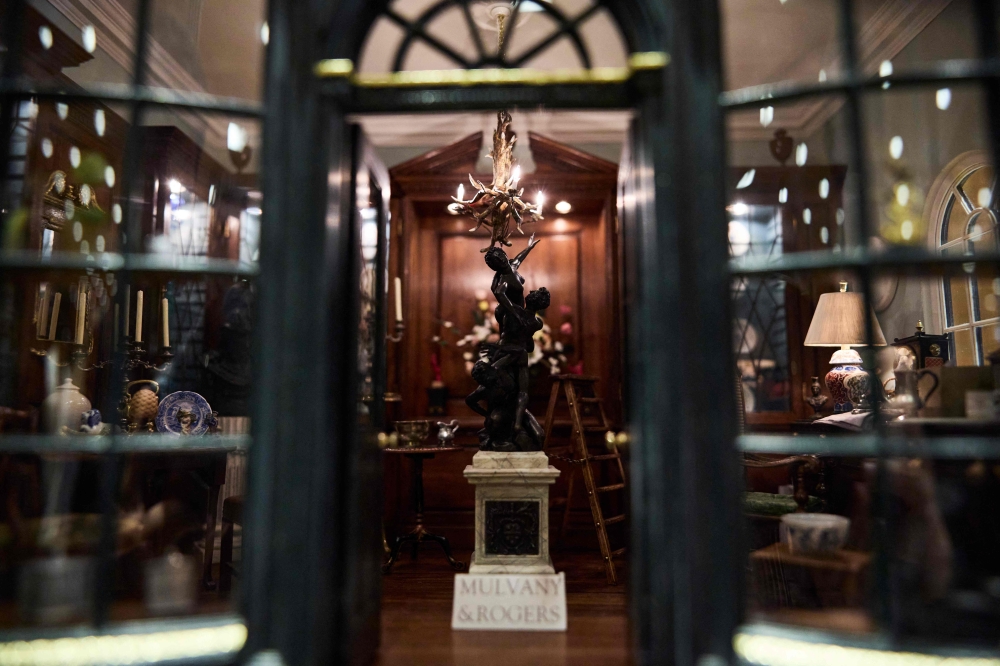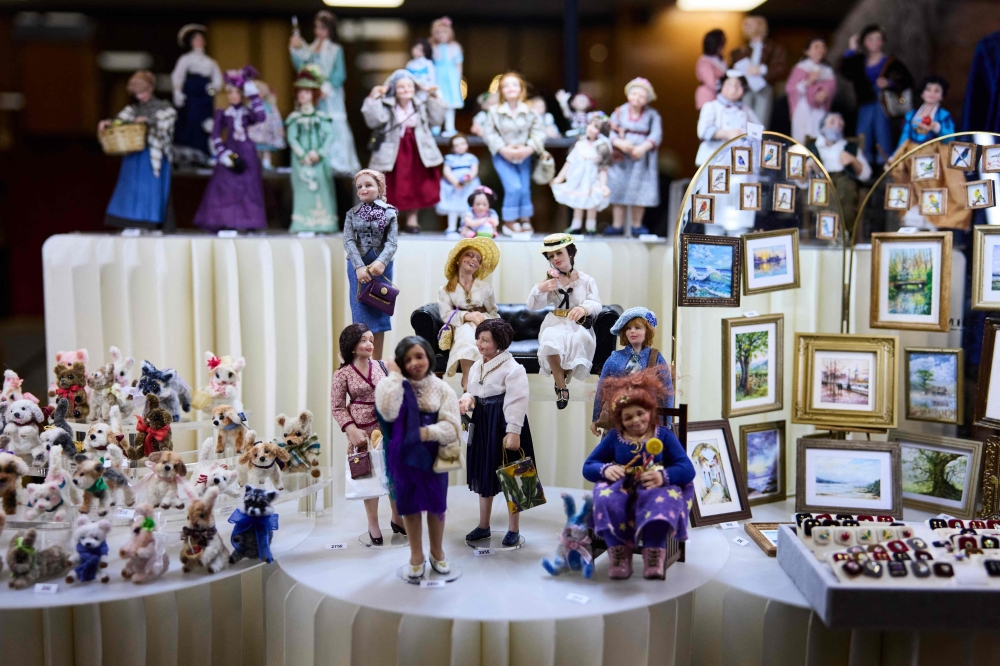LONDON, May 22 — A log burns in the hearth in the artfully lit drawing room. The armchairs look plush and inviting. Glasses and a bottle of wine stand ready as a grandfather clock keeps time.
It is all straight out of a glossy magazine and yet every carefully crafted item in the room could fit into the palm of one hand.
“I love Victorian (19th century) houses and always wanted to live in one but it never happened,” laughed doll’s house enthusiast Michele Simmons, admiring the cosy miniature scene by historical specialists Mulvany & Rogers.
The 57-year-old corporate recruiter revived her childhood passion for doll’s houses during the pandemic and has since “flipped” about 10, buying them, doing them up and selling them on.
She and her daughter thought nothing of flying all night from Boston in the United States to hunt for tiny curtains and a child’s crib at the leading Kensington Dollshouse festival in London.
“I love it! You don’t think about anything else when you are doing this,” she told AFP, admitting she often had to be dragged out of her work shed to feed her children as she became so absorbed.
Exquisite miniatures
The annual festival has been gathering some of the world’s finest miniature craftspeople since 1985, celebrating a hobby that has seen rising interest recently and a mushrooming of online activity.
It showcases tiny versions of anything needed to furnish a house, from chandeliers and paintings to mahogany dining tables and kitchen items, all with steep price tags.
Miniatures at the London Dollhouse Showcase on dispaly in London May 16, 2025. — AFP pic
Doll’s houses may be traditionally associated with children, but this high-end miniature collecting is very much an adult hobby.
“This is craftspeople working on just exquisite things,” said self-confessed “tiny-obsessed” Rachel Collings, who bought toys from renowned miniaturists Laurence & Angela St. Leger.
Every single one of her purchases, which cost at least £40 (RM229), fits easily into a small plastic container and will be added to her collection of equally small items.
“I’ve got half a cut lemon. Just imagine the size of that. A lemon squeezer and a pastry brush and a hand whisk that actually works,” said the 47-year-old editor.
“It’s an inner child thing. These things are just so beautiful.”
Doll’s houses originated from Europe in the 1500s when they were used to display the miniature possessions of the wealthy.
Just as at the London festival, these so-called “baby houses” were strictly for adults, not children.
Retired midwife Susan Evans, 67, on her annual pilgrimage from Colwyn Bay in north Wales, does not just have one doll’s house.
“I have a whole village,” she said. “It’s got 18 Victorian shops, a school, a manor house, a pub and a now a church,” she said, adding that the church had cost over £4,000.
Initially the hobby was just a stress-buster to help her unwind, but she has now raised thousands of pounds hosting groups to visit the display in her home.
“It’s my passion. It’s escapism and it’s about using your imagination, which I think is very good for your mental health,” she said.
‘In control’
Kensington Dollshouse organiser Charlotte Stokoe said there was currently huge interest in doll’s houses and miniatures compared to before the pandemic.

Kensington Dollshouse organiser Charlotte Stokoe said there was currently huge interest in doll’s houses and miniatures compared to before the pandemic. — AFP pic
“When the world itself is going a bit crazy with so much stress in everyone’s lives, it’s quite relaxing. You are in control,” she said, adding that many people had delighted in pulling out old doll’s houses during the Covid lockdowns.
And at a time of rising costs, she said, people had “discovered they can do interior design that maybe they can’t do with their own homes — in small scale it’s so much more doable”.
Medical anthropologist Dalia Iskander of University College London (UCL) has spent three years researching the subject for her forthcoming book “Miniature Antidotes”.
“For many people it’s a way of exploring their own experiences and memories and imagination and incorporating that into these miniature worlds,” she said.
A whole range of medical issues such as depression or anxiety could all be explored through miniatures in a “beneficial” way, she added.
Miniatures enthusiast Collings said the hobby had become such a source of happiness that her 12-year-old daughter also got involved. She urged anyone to give it a try.
“When everything is difficult, there are these tiny things,” she said.
“Sometimes I just go and sit and look at them and it just makes me happy.” — AFP


